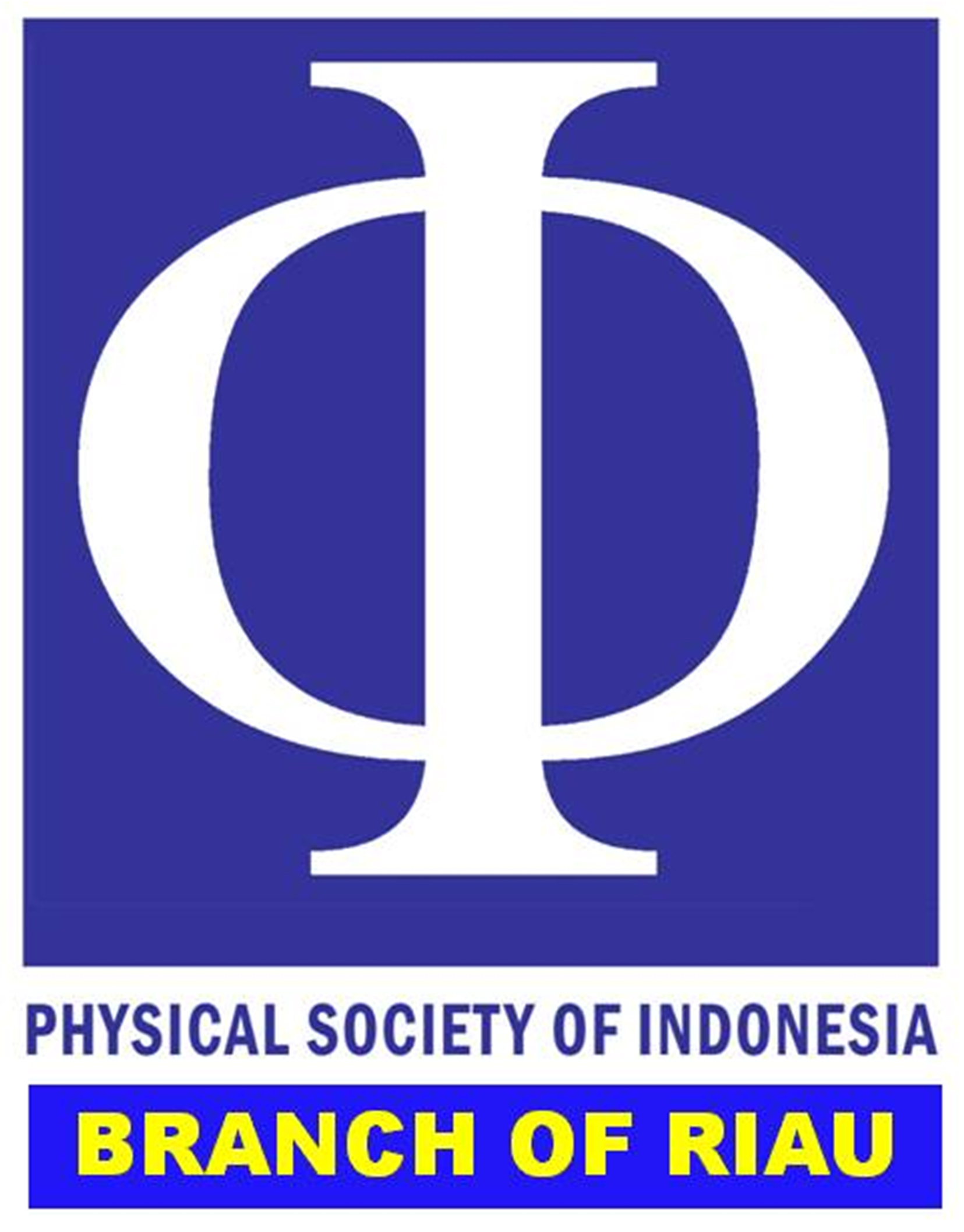Interpretation of aquifer layers in peatland areas using the Wenner configuration geoelectric method in Rimba Panjang Village, Tambang District, Kampar Regency
Abstract
Keywords
Full Text:
PDFReferences
1. Juandi, M. & Ginting, E. N. (2021, October). The groundwater analysis using geoelectric method Wenner rules in Rejosari Village, Tenayan Raya Pekanbaru. Journal of Physics: Conference Series, 2049(1), 012064.
2. Handwerger, A. L., Booth, A. M., Huang, M. H., & Fielding, E. J. (2021). Inferring the subsurface geometry and strength of slow‐moving landslides using 3‐D velocity measurements from the NASA/JPL UAVSAR. Journal of Geophysical Research: Earth Surface, 126(3), e2020JF005898.
3. Singha, K., & Navarre‐Sitchler, A. (2022). The importance of groundwater in critical zone science. Groundwater, 60(1), 27–34.
4. Juandi, M. & Santoso, S. A. (2021). Analysis of groundwater infiltration using the schlumberger geoelectric method. Journal of Physics: Conference Series, 2049(1), 012070.
5. Young, S. L., Frongillo, E. A., Jamaluddine, Z., Melgar-Quiñonez, H., Pérez-Escamilla, R., Ringler, C., & Rosinger, A. Y. (2021). Perspective: the importance of water security for ensuring food security, good nutrition, and well-being. Advances in nutrition, 12(4), 1058–1073.
6. Sarker, B., Keya, K. N., Mahir, F. I., Nahiun, K. M., Shahida, S., & Khan, R. A. (2021). Surface and ground water pollution: causes and effects of urbanization and industrialization in South Asia. Scientific Review, 7(3), 32–41.
7. Octalizar, M. R. (2021). Penentuan lapisan dan akuifer dengan kualitasnya menggunakan metode geolistrik dan geokimia konfigurasi Wenner di Desa Tarai Bangun Kecamatan Tambang Kabupaten Kampar. FMIPA Universitas Riau.
8. Enggarwati, D. A., Susilo, A., & Wardhana, D. D. (2015). Pendugaan akuifer serta pola alirannya dengan metode geolistrik daerah Pondok Pesantren Gontor 11 Solok–Sumatera Barat. Physics Student Journal. 2(1), 549– 553.
9. Juandi, M. (2018). The interpretation of underground water physical parameters of housing in the region of asahan indah palm oil factory area Rokan Hulu District. Open Journal of Modern Hydrology, 8(4), 119–125.
10. Wijaya, A. S. (2015). Aplikasi metode geolistrik resistivitas konfigurasi Wenner untuk menentukan struktur tanah di halaman belakang SCC ITS Surabaya. Jurnal Fisika Indonesia, 19(55), 1–5.
11. Nuryanti, N. (2020). Identifikasi akuifer dangkal dengan menggunakan metode geolistrik konfigurasi Wenner dan hidrogeokimia di Desa Rimba Panjang. FMIPA Universitas Riau.
12. Juandi, M. (2017). Sustainability model for unconfined aquifers. International Journal of Science and Applied Technology, 1(1).
13. Juandi, M. & Syahril, S. (2017). Empirical relationship between soil permeability and resistivity, and its application for determining the groundwater gross recharge in Marpoyan Damai, Pekanbaru, Indonesia. Water Practice and Technology, 12(3), 660–666.
14. Vila-Concejo, A., Gallop, S. L., & Largier, J. L. (2020). Sandy beaches in estuaries and bays. Sandy beach morphodynamics, 343–362.
15. Driscoll, F. G. (1987). Groundwater and Wells, Johnson Division, second printing, St. Paul, MN.
16. Telford, W. M., Geldart, L. P., & Sheriff, R. E. (1990). Applied geophysics. Cambridge university press.
17. Lenkey, L., Hámori, Z., & Mihálffy, P. (2005). Investigating the hydrogeology of a water-supply area using direct-current vertical electrical
soundings. Geophysics, 70(4), 11–19.
18. Sultan, S. A. & Santos, F. A. M. (2008). Evaluating subsurface structures and stratigraphic units using 2D electrical and magnetic data at the area north Greater Cairo, Egypt. International Journal of Applied Earth Observation and Geoinformation, 10(1), 56–67.
DOI: http://dx.doi.org/10.31258/jkfi.21.3.265-270
Refbacks
- There are currently no refbacks.

This work is licensed under a Creative Commons Attribution-NonCommercial 4.0 International License.
Indexing by:








